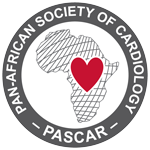FRIENDS OF PCR 2025
Stent – Save a Life! charts a new course, The Stent – Save a Life! (SSaL) initiative aims to reduce mortality in patients with STEMI by enhancing timely access to reperfusion therapy. Here its Chairs discuss how SSaL’s attention is now shifting to low- and middle-income countries (LMICs):
“There is no doubt that the original Stent for Life initiative had a huge, positive impact on mortality and morbidity in patients with STEMI in Europe. The SSaL community has since expanded globally to include more than 40 member countries but less than a quarter of these are LMICs. Registry data indicate that death rates from ACS are close to 20% in some parts of Africa – almost 10 times higher than in Western countries. As we will discuss in our SSaL session at EuroPCR today, patients with MI who manage to get to hospital often arrive outside the critical time window. Late presentation increases complexity and high rates of associated heart failure or cardiogenic shock result in considerable mortality. We made the conscious decision to focus our efforts on LMICs in view of the large unmet need in these countries. The first phase involves selecting one such country that fulfils all the criteria. Representatives from Tanzania had initially asked for advice on setting up a STEMI network in their country at the EuroPCR 2023 meeting and since then, we have visited and developed the foundations for the pilot. With the help of the local SSaL team, including national champion for SSaL, Robert Mvungi, and project manager, Khuzeima Khanbhai, we received endorsements from the Tanzanian Cardiac Society and the Ministry of Health. The latter, governmental involvement, is particularly important to ensure sustainability after SSaL has provided its initial 3 years of support. For the organisation of SSaL, we now have a collaboration with the Egypt-based ICOM Group. For the Tanzania project, we have the support of the Mission Aviation Fellowship (MAF) and received initial funding from philanthropic partners. Hopefully, the stage will soon be set for us to apply SSaL’s Blueprint and STEMI India hub-and-spoke model,1 adapted to Tanzanian needs. While we have extensive experience in setting up STEMI networks in other countries, such as India,2 our current work represents uncharted territory. We hope that success, and lessons learned, will eventually lead to similar programmes in other African countries. [Call-out: Success stems from enthusiastic, committed local cardiologists who believe they can make a difference, with sufficient funding to make it happen.] Moreover, SSaL has recently entered into a collaboration with the American College of Cardiology’s Global Heart Attack Treatment Initiative (GHATI), which will increase our global standing and may open up additional funding opportunities. Working with GHATI may also help us forge new relationships with other major health organisations such as the World Heart Federation and the World Health Organization to increase our visibility and spread the word further about the benefits of regional STEMI care systems.” A scientific statement on reperfusion therapy for STEMI in LMICs is currently under review. This document is the result of a collaboration between SSaL with the European Society of Cardiology’s (ESC) Association for Acute CardioVascular Care (ACVC), the European Association of Percutaneous Cardiovascular Interventions (EAPCI), the European Association of Preventive Cardiology (EAPC) and the ESC Working Group on Thrombosis.
DON’T MISS
Managing complex STEMI patients in diverse healthcare systems - Adapting best practices to local realities
Tuesday, Room 341,
12:00 – 13:00






